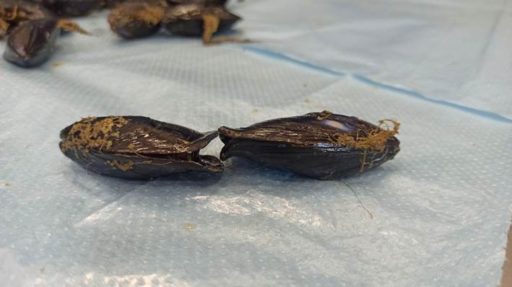30/07/2025
Do you consider yourself sensitive to animal welfare? If so, I ask you just one thing: when I say “animal welfare,” pause for a moment and think about the first animal that comes to mind.
I’m quite sure that among all the answers I might receive, no one would say: a mussel. “Animal welfare in mussels? Seriously? Isn’t this blog supposed to be about food loss?”
Yes, I know, it surprised me too. This case study has been unexpectedly unsettling. It’s made me look at things differently. I’ll be honest: I was the first to shift my view. And it happened to coincide with a song I’ve recently discovered and absolutely love, but more importantly with a reflection it triggered in me. Before becoming a father, there’s an image in the song that would’ve made me identify with the child, seeing myself through my mother’s loving gaze. But now… now I see myself in the eyes of the mother. And only now do I truly understand the depth of her gaze, what the song beautifully sums up as the moon (or the whole world) in your eyes.
Maybe this case study can offer that kind of shift in perspective when it comes to food loss. To explore it, I travelled to the Adriatic coast in Italy, specifically to Ancona, where this research is being led by Università Politecnica delle Marche (UNIVPM).
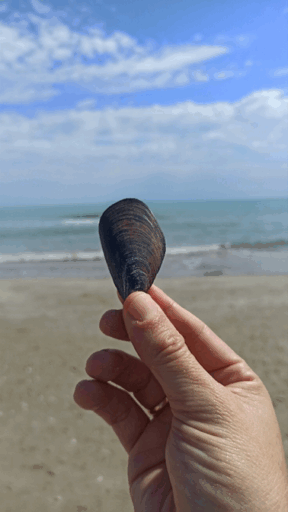
The aim? To study food losses in mussel farming, and to assess whether it’s even possible to measure this issue in aquaculture, especially with molluscs.
The topic of mussel aquaculture in Italy has been at the center of intense debate this past year. Heavy rains have caused rivers to carry massive loads of sediments and nutrients into coastal waters, leading to microalgae blooms that have destroyed large volumes of mussels, especially in the northern Adriatic. So now the question is: Could mussel farming be the solution to maintaining the economic activity of mussel sales and consumption in the region? And what other impacts, positive or negative, might it have? What do you think?
In this context, we wanted to study the current mussel farming system, which, unlike salmon farming, takes place entirely at sea, leaving the mussels fully exposed to local environmental conditions, including currents, predators, and temperature fluctuations.
We looked at the levels of food loss within this system.
Here’s how it works: mussels are raised inside long, mesh-like tubes known as “socks”, each weighing about 100 kg. Based on the date these socks are deployed, farmers can estimate when the mussels will be ready for harvest, typically when they reach about 5 cm in size. When harvesting, the socks are brought aboard boats, and the mussels are cleaned and sorted. Those that meet market size are selected, and smaller ones are not discarded, as happens with many other crops, but are returned to the socks to continue growing until they’re ready.

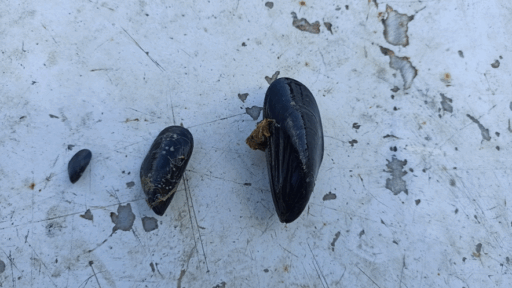
Interestingly, during the cleaning process. Our demand for sparkling clean mussels has a consequence: some shells break in the process and become inedible. That’s the cost of our consumer preferences. UNIVPM has been analysing these losses, categorizing the mussels into:
In general terms (results vary by season and conditions), of the 100 kg in a sock, around 35 kg become edible and marketable mussels. The rest includes smaller mussels that are returned to grow, and debris removed during cleaning.
First stage of the cleaning process: feeding the sock into the washing machine, which primarily removes sludge, plastics, and other large contaminants:
Subsequently, the remaining large clusters of mussels are separated, gradually disaggregated, and subjected to an additional cleaning process:
The process then continues through a screening area, where the mussels are sorted by size, with particular attention given to marketable specimens and seeds intended for reuse:
Bags are then prepared containing mussels that are ready for sale and human consumption:
The seeds and smaller mussels are used to prepare new socks, which are then reintroduced into the sea for further cultivation:

These 35 kg were then weighed and analysed by category, separating: (i) cleaned mussels ready to be sold; (ii) seeds, recovered by the farmers for the following productive cycle; (iii) dead mussels under market size; (iv) slightly damaged mussels after cleaning; (v) dead mussels at market size; (v) mussels irreparably damaged by the cleaning procedure. The estimated loss fall into these last two categories that altogether accounted for 5.2% of the weighted mussels.
Analysis process of mussel losses. Analysing 35 kilos of mussels by Ike Olivotto and Matteo Zarantoniello from UNIVPM:
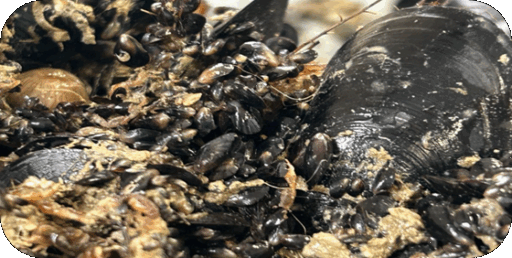
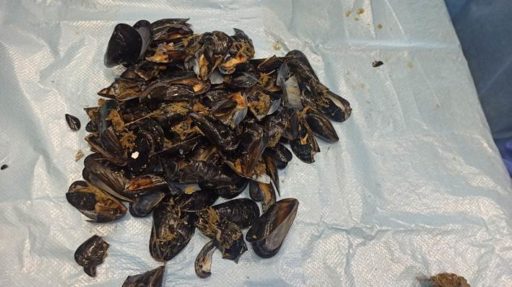
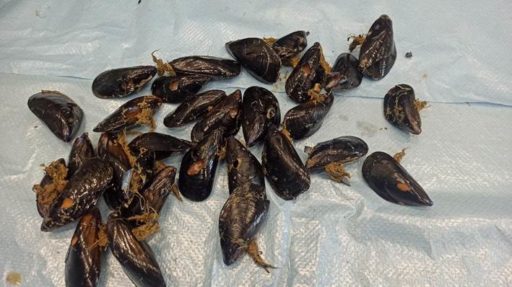
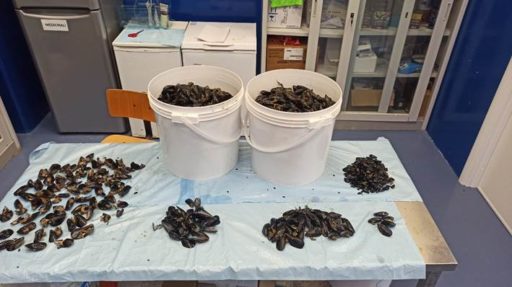
So far, so good. But now you’re wondering:
Where’s the animal welfare part?
Well, just like in real life, things are more complicated than what fits in a blog post. In many cases, these mussels aren’t sold straight from the sea but are shipped to other areas and seas where mussel seeds are limited. The socks are transported whole by boat, put on tracks (with controlled temperature) out of the water and often under heavy pressure from other socks stacked on top.

All of this can cause stress levels that affect the mussels, and more importantly for our anthropocentric focus: it can alter the nutrients they provide us. Even if they remain edible, stressed mussels may be less nutritious. For example, their omega-3 concentration, a key nutritional metric, is one of the aspects being studied at UNIVPM together with some stress related markers.
This opens the door to a long-theorized but rarely measured idea: food loss is not only about quantity, what gets thrown away, but also about quality. This “qualitative loss” has always been difficult to assess. But thanks to this kind of research, we may finally be able to do it. And so, we can begin to form a more complete understanding of food loss, just as I’ve come to understand the depth of a mother’s gaze, now that I’m a father.
And who knows, maybe studies like this will help improve animal welfare across all living beings, from the biggest to the smallest, even if it starts from a selfish place: a well-treated organism nourishes us more. Just like when I walk with my daughter Claudia and she points out all the tiny things on the street, the ants we never notice, the leaf with a funny shape… A world behind her eyes that I’d long stopped seeing as an adult.
Maybe these “invisible” beings, through case studies like this one, can teach us to truly value animals, not only when we lose them, but also when we harm them without even realizing it.
And perhaps, through this ego-driven journey, we might arrive at a deeper understanding of what surrounds us.
Just as Claudia teaches me every single day.
I am deeply grateful for the warm welcome and all the learning opportunities made possible thanks to the team at UNIVPM who led this case study, especially Ike Olivotto, Matteo Zarantoniello, and Adriano Mancini, as well as the company Sena Gallica Soc. Coop. Grazie mille per tutti.
